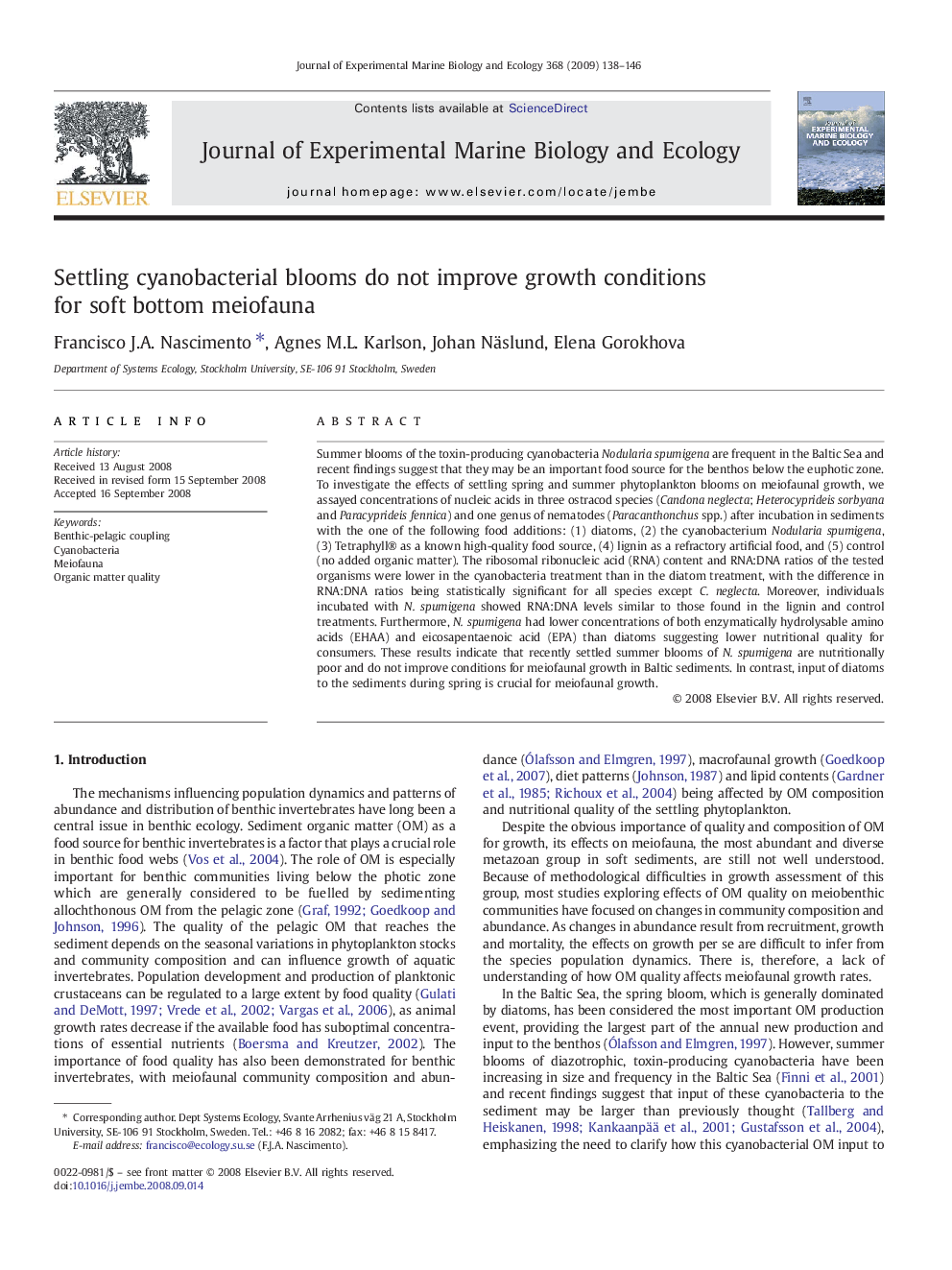| Article ID | Journal | Published Year | Pages | File Type |
|---|---|---|---|---|
| 4397104 | Journal of Experimental Marine Biology and Ecology | 2009 | 9 Pages |
Summer blooms of the toxin-producing cyanobacteria Nodularia spumigena are frequent in the Baltic Sea and recent findings suggest that they may be an important food source for the benthos below the euphotic zone. To investigate the effects of settling spring and summer phytoplankton blooms on meiofaunal growth, we assayed concentrations of nucleic acids in three ostracod species (Candona neglecta; Heterocyprideis sorbyana and Paracyprideis fennica) and one genus of nematodes (Paracanthonchus spp.) after incubation in sediments with the one of the following food additions: (1) diatoms, (2) the cyanobacterium Nodularia spumigena, (3) Tetraphyll® as a known high-quality food source, (4) lignin as a refractory artificial food, and (5) control (no added organic matter). The ribosomal ribonucleic acid (RNA) content and RNA:DNA ratios of the tested organisms were lower in the cyanobacteria treatment than in the diatom treatment, with the difference in RNA:DNA ratios being statistically significant for all species except C. neglecta. Moreover, individuals incubated with N. spumigena showed RNA:DNA levels similar to those found in the lignin and control treatments. Furthermore, N. spumigena had lower concentrations of both enzymatically hydrolysable amino acids (EHAA) and eicosapentaenoic acid (EPA) than diatoms suggesting lower nutritional quality for consumers. These results indicate that recently settled summer blooms of N. spumigena are nutritionally poor and do not improve conditions for meiofaunal growth in Baltic sediments. In contrast, input of diatoms to the sediments during spring is crucial for meiofaunal growth.
